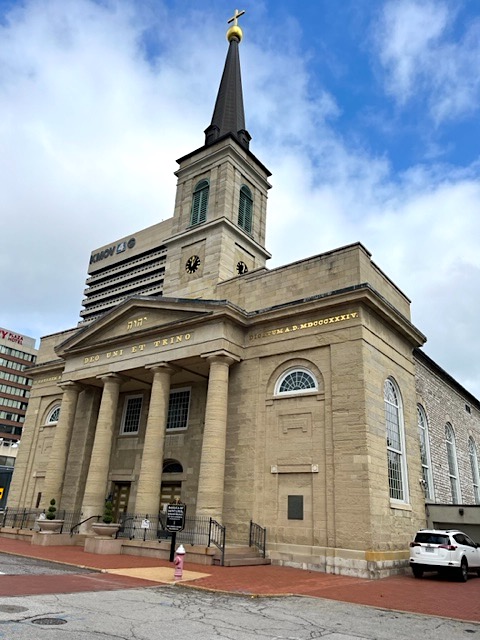
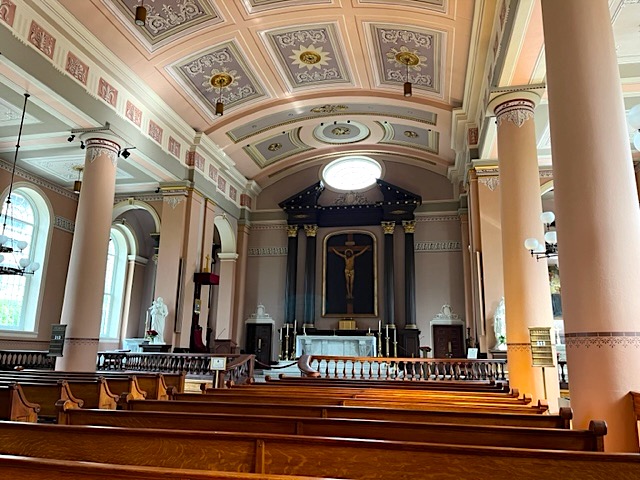
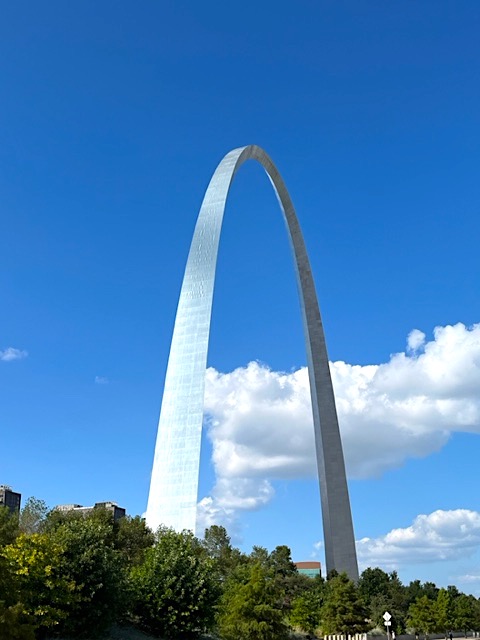
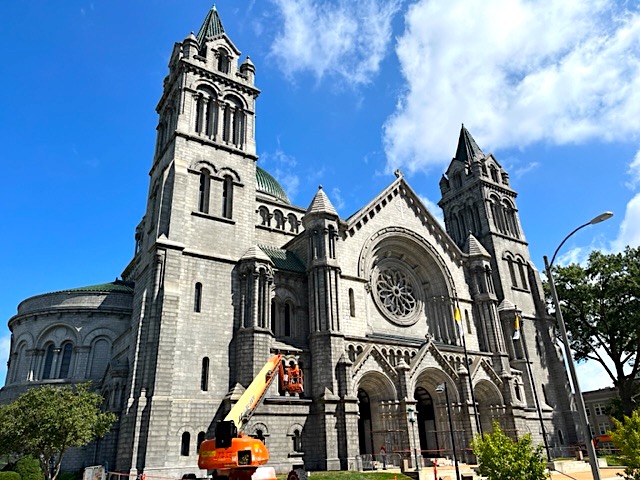

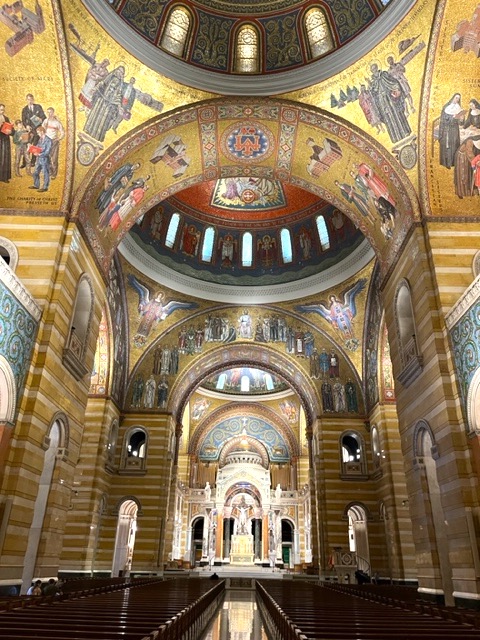
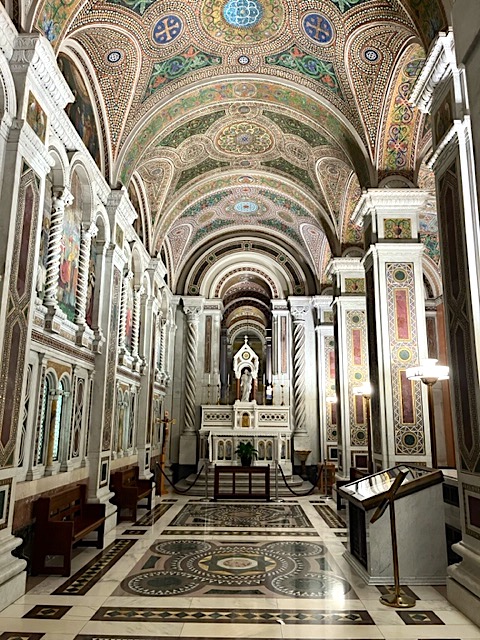
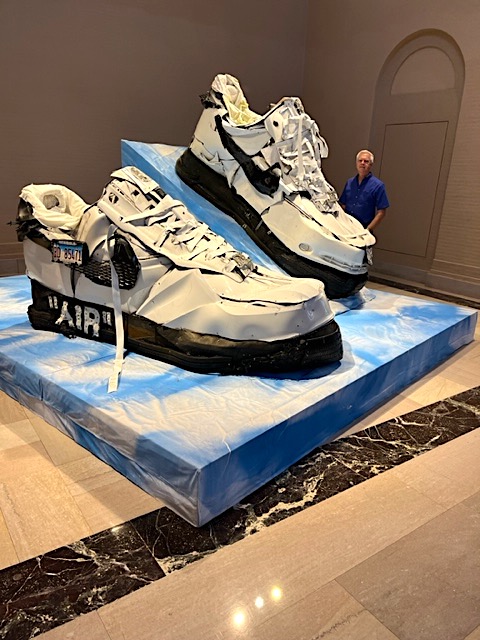
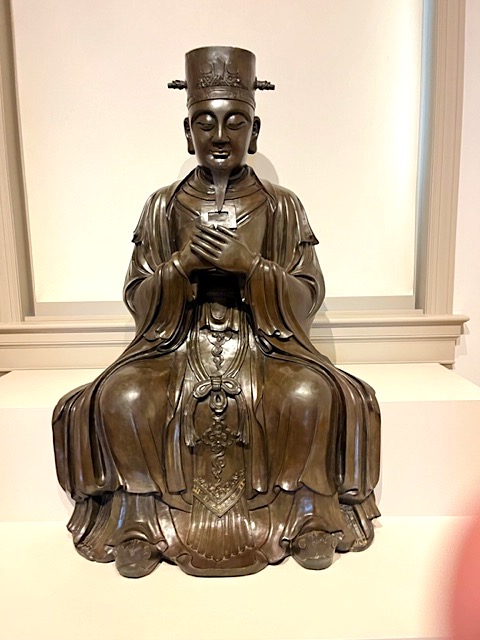
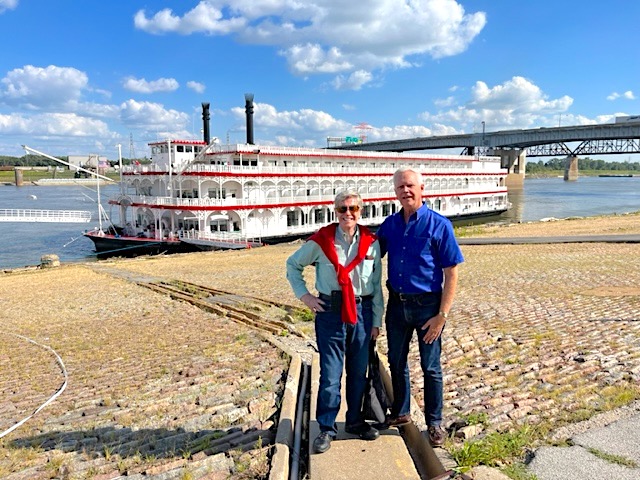
We arrived in St. Louis to cool temperatures and light drizzle that would gradually turn to a pleasant sunny day with random clouds. St. Louis is the second largest city in Missouri with a population of approximately 300,000 inhabitants, although the metropolitan area has around 2.8 million people. It is located near the confluence of the Mississippi River and the Missouri Rivers. The city is built on the bluffs above the western banks of the Mississippi River with Illinois across the river and St. Louis consists of 79 distinct neighborhoods.
In 1904, St. Louis hosted both the World’s Fair and the Olympics, becoming the first non-European city to host the games. After the Civil War, social and racial discrimination in housing and employment were common and in 1916 St. Louis passed a segregation ordinance. If 75% of the residents of a neighborhood were of a certain race, no one of a different race was allowed to move in. This policy remained in place until 1948 when it was struck down by the courts.
St. Louis, like many American cities expanded and grew due to industrialization which provided new job opportunities to immigrants and migrants from the south. In 1950 there were over 850,000 residents in St. Louis before a steady decline created by the effects of suburbanization. Urban revitalization is under way in recent years although many vacant homes and lots remain. The city has attracted immigrants from Vietnamese, Latin Americans and Bosnians who now make up the largest Bosnian community outside of Bosnia Herzegovina.
The Gateway Arch, standing 630 feet in height is symbolic of St. Louis. This iconic structure was completed in 1965 as a monument to the western expansion of the United States and has since provided millions of visitors with stunning views of up to 30 miles from east to west. Many of our fellow passengers made this trip but we chose a few other attractions to check out.
Our first stop of the day was at the “Basilica of St. Louis King of France,” founded in 1764. The current church on the site was completed in 1834 and is fondly referred to as the old cathedral because a newer cathedral on another site was completed in 1914. This church is quite simple by today’s standards but is still elegant and beautifully maintained.
Next, we visited the National Blues Museum located in downtown St. Louis. The museum preserves and honors the history of this soulful American genre of music. The museum is divided up into four areas beginning with “Early Evolution of the Blues” from 1900 to 1930. The next area called “The Blues Plug In” covers the years of 1930 to 1960. The third section called the “Blues Goes Mainstream” from 1960 to 1980. The final section of the museum titled “The Tradition Continues” covers 1980 to today. The museum has many photographs, costumes, instruments and recordings in many different formats.
We then visited the Cathedral Basilica of Saint Louis, completed in 1914 and called the new cathedral. This stunning cathedral was designed to meet the grandeur of European cathedrals. One of the most notable traits of the structure is its domed ceiling covered in mosaics portraying saints and milestones of the Catholic church in St. Louis. The mosaics are made up of some 41.5 million pieces and it is one of the largest in the Western Hemisphere. Kent said it was one of the most beautiful churches he had ever seen….anywhere.
Then we were off to The Missouri History Museum, a nationally accredited institution that looks at the history of St. Louis from its founding in 1764 up to the present day. Located in the beautiful Forest Park, the building is home to a variety of exhibits, programs, and events for visitors of all ages and interests. With historical roots dating back to 1866, the vast collection highlights the complex and varied stories of the area and the people who lived here. Beautifully presented exhibits with many photographs, videos, as well as displays of objects from days gone by.
Lastly we visited the Saint Louis Art Museum founded in 1879 and includes a comprehensive collection of original works of art spanning five millennia and six continents. The Museum’s goal is to engage, include, and represent the full diversity of the St. Louis community, and strives to inspire discovery, elevate the human spirit, and preserve a legacy of artistic achievement for the people of St. Louis and the world. The museum is housed in the Palace of Fine Arts building that was built for the 1904 World’s Fair and designed by Cass Gilbert. The museum is massive and beautiful from top to bottom. We particularly enjoyed the Asian Art, the European art including Van Gogh, Monet, Manet, Cezanne as well as the Decorative Arts exhibits.
We found the city to be filled with many beautiful buildings both old and new, yet still a work in progress. There were many boarded up vacant buildings downtown covered in graffiti sitting next to modern hotels and immaculately maintained historic buildings. Other lots have been cleared or buildings are in the process of being demolished. There was much more to discover than is possible in one day.
The evening’s entertainment was a country music show featuring the three cruise directors. They had multiple costume changes and sang a wide variety of classic country songs by the likes of Dolly Parton, Garth Brooks, Loretta Lynn, Reba McIntire, Hank Williams.
